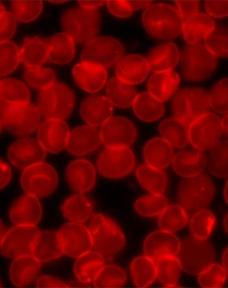Ruxolitinib Plus Antifungal Azoles Do Not Impact Acute GVHD Outcomes
Response rates appear to be higher among patients with acute graft-versus-host disease who receive ruxolitinib compared with best available therapy in the phase 3 REACH2 trial.
Twenty-nine patients given azoles discontinued ruxolitinib treatment because they completed the study treatment compared with 4 patients without azoles, while 24 patients treated with azoles discontinued ruxolitinib due to adverse events vs 5 patients on ruxolitinib not given azoles.

The addition of antifungal prophylaxis azoles to ruxolitinib (Jakafi) or best available therapy (BAT) did not affect treatment outcomes for patients with acute graft-versus-host disease (GVHD), according to data from the phase 3 REACH2 study (NCT02913261) presented during the 2024 Tandem Meeting.1
The open-label study initially demonstrated significant improvements to therapy for patients with GVHD on ruxolitinib compared with BAT.2 The primary end point of the study was overall response at day 28 with a key secondary end point of durable overall response at day 56 and was met in both cases. Overall response at day 28, and the durable overall response at day 56, was higher for those on ruxolitinib (n = 154) compared with BAT (n = 155) at 62% vs 39% (odds ratio [OR], 2.64; 95% CI, 1.65-4.22, P < .001) and 40% vs 22% (OR, 2.38; 95% CI, 1.43-3.94, P < .001), respectively.2
Of the 154 patients given ruxolitinib in the REACH2 trial, 117 (76.0%) were given concomitant azoles while 37 (24.0%) patients did not, and of the 115 patients given BAT in the trial, 106 (68.4%) had concomitant azoles and 49 (31.6%) did not.1 The overall response rate (ORR) was still significantly higher at day 28 for patients who received azoles while on ruxolitinib compared with BAT at 67.5% vs 44.3% (OR 2.73; 95% CI, 1.57-4.75, P = .0003), respectively. This was mirrored in patients who did not receive azoles with a 45.9% ORR in the ruxolitinib arm compared with 28.6% on those with BAT (OR, 2.10; 95% CI, 0.85-5.22, P = .1112).1
When looking at best overall response (BOR), this also remained higher for patients on ruxolitinib, whether they received azoles alongside treatment.1 In the group of patients who received azoles, the BOR was 87.2% for patients on ruxolitinib with 53.0% of those being a complete response (CR), whereas the BOR for those not on azoles was 64.9% with 13.5% being CRs. The difference in BOR between the ruxolitinib and BAT arms of those who received azoles was also significant compared with the 66.0% BOR in the BAT arm (OR 3.82; 95% CI, 1.89-7.69, P = .0001). Further, the duration of response (DOR) was numerically longer for patients with ruxolitinib than with BAT in both groups of patients on or not on concomitant treatment with azoles at a median of 167.0 days (IQR, 78.0-225.0) vs 113 days (IQR, 70.0-170.0), and 170.0 days (IQR, 80.0-244.0) vs 52.0 days (IQR, 22.0-not evaluable).1
For patients with acute GVHD, antifungal prophylaxis with azoles is a common treatment. Lead study author Zahra Mahmoudjafair, PharmD, BCOP, the clinical pharmacy manager of hematology/BMT/cellular therapies at the University of Kansas Medical Center, pointed out that, because of the common use of azoles, there is a potential for drug-drug interactions with ruxolitinib that could impact the safety and efficacy of the Janus kinase inhibitor.3
In the findings presented at the conference, concomitant azoles did not impact dose intensity of ruxolitinib at day 28 nor safety, but those without concomitant azoles had fewer dose modifications among the patients in the REACH2 trial.1 The median range of ruxolitinib dose intensity up to day 28 was 20.0 mg (range, 9.0-21.0 mg) for the patients on azoles and 20.0 mg (range, 8.4-20.0 mg) for those without azoles. Dose modifications were seen in 82.9% of those on azoles compared with 60.0% for those without, but discontinuations of ruxolitinib were slightly higher for those without azoles compared with patients given azoles at 94.3% vs 92.3%, respectively.
Twenty-nine patients given azoles discontinued ruxolitinib treatment because they completed the study treatment compared with 4 patients without azoles, while 24 patients treated with azoles discontinued ruxolitinib due to adverse events vs 5 patients on ruxolitinib not given azoles. Fifteen patients on ruxolitinib given azoles died during treatment vs 6 patients without azoles.1
Overall, the mean dose of ruxolitinib was 10 mg given twice a day and this treatment remained well tolerated when patients were given azoles.1 At baseline, 47.9% (n = 56) of patients on ruxolitnib and azoles had cytopenias compared with 41.5% (n = 44) in the BAT arm. Of those not on azoles who had cytopenia at baseline was similar in the ruxolitinib arm compared with the BAT arm at 48.6% (n = 17) and 56.8% (n = 56.8). Further, the researchers concluded that there were no differences in the development of cytopenia up to day 28 of treatment for patients treated with or without azoles in either arm.1
References
- Mahmoudjafari Z, Kintsch E, Xue Z, et al. Effects of Concomitant Azoles on Ruxolitinib Treatment in Patients with Acute Graft-Versus-Host Disease: A Post Hoc Analysis from the Randomized Phase 3 REACH2 Study. Presented at: 2024 Transplantation & Cellular Therapy Meetings; February 21-24, 2024; San Antonio, TX. Abstract 387.
- Zeiser R, von Bubnoff N, Butler J, et al; REACH2 Trial Group. Ruxolitinib for Glucocorticoid-Refractory Acute Graft-versus-Host Disease. N Engl J Med. 2020;382(19):1800-1810. doi:10.1056/NEJMoa1917635
- Salas MQ, Mussetti A, Muñóz C, et al. Isavuconazole prophylaxis against invasive fungal infections in allogeneic stem cell transplantation: A single-center experience. Hematol Transfus Cell Ther. 2022;44(3):440-443. doi:10.1016/j.htct.2021.01.002